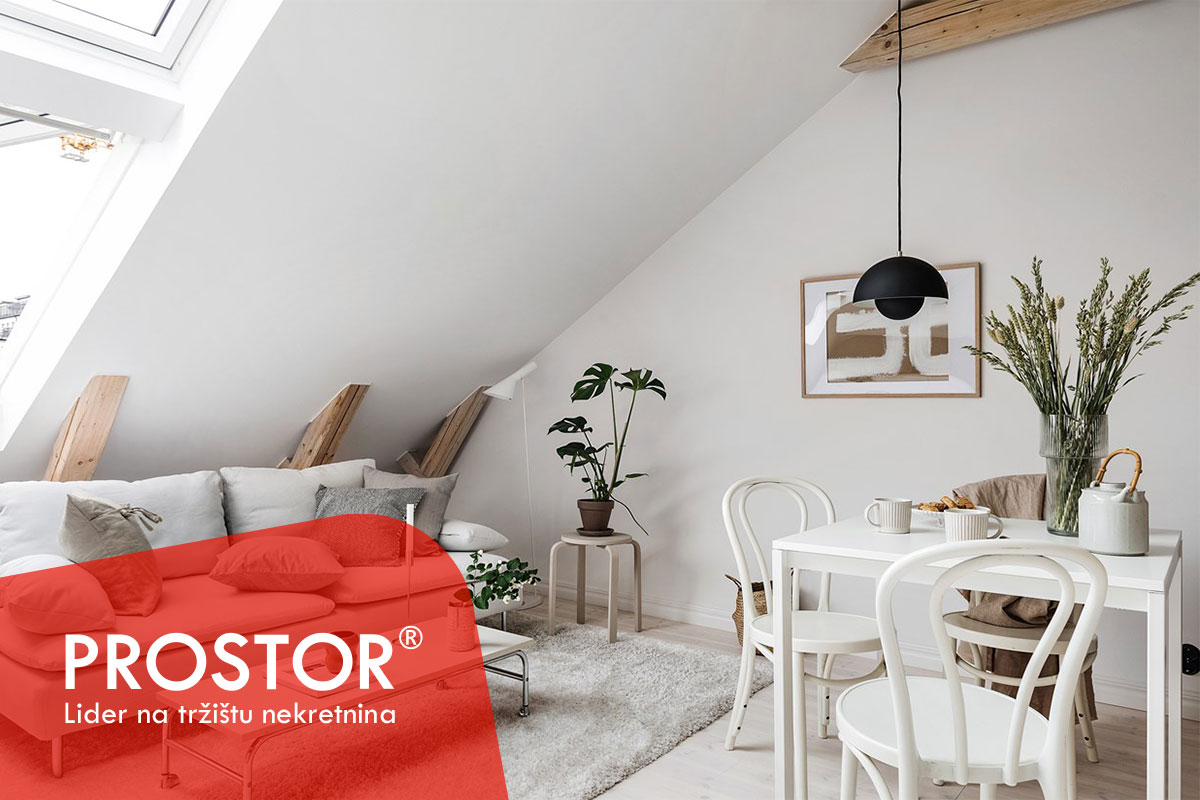Advantages and disadvantages of living in ground-floor apartments, attic apartments, and duplexes
Each of these options comes with a unique lifestyle, different advantages, and certain trade-offs.
In the world of real estate, location is just the beginning of the story the real challenge starts when you need to decide which floor of the building you want to live on. Are you drawn to the comfort of the ground floor, the special atmosphere of the attic, or the functional spaciousness of a duplex?
Each of these options comes with a unique lifestyle, different advantages, and certain trade-offs. The ground floor offers practicality, the attic offers character and peace, while the duplex brings a sense of dynamism and homelike comfort within an apartment building.
When buying or renting a flat, understanding these differences can make the key distinction between a space that merely “fits” and one that truly feels like home.
Below, we present the main advantages and disadvantages of living in ground-floor apartments, attics, and duplexes — so that your next housing decision is both thoughtful and right.
Living on the ground floor
Advantages:
Ground-floor apartments appeal to those who value accessibility and everyday convenience. With no stairs, no elevators, and quick access outdoors, they’re ideal for families with children, the elderly, or pet owners. They often come with a bonus in the form of a small garden or terrace, creating a sense of a private oasis.
In addition, ground-floor apartments can be more energy-stable, as they’re protected from extreme temperature changes and wind.
Disadvantages:
The main challenges of ground-floor living are a lack of privacy, higher noise levels, and greater exposure to passersby. Security is also an important concern, so window bars or alarm systems are almost a must. In older buildings, moisture can be an issue, especially if the property lacks proper waterproofing.
Living in the attic
Advantages:
Attic apartments are synonymous with peace and privacy. Their unique architectural design gives the space a special warmth and character, while skylights provide plenty of natural light. They’re ideal for those seeking a retreat from city noise and an apartment with personality.
With good insulation, an attic can be surprisingly energy-efficient, and the elevated view often becomes one of its greatest assets.
Disadvantages:
Slanted walls and lower ceilings can limit furniture arrangement. During summer, the space can overheat, so air conditioning and ventilation are essential. Additionally, maintaining skylights and the roof requires attention and regular investment, making upkeep more costly than in a standard apartment.
Living in a duplex
Advantages:
Duplexes are a perfect choice for those who want the comfort of a family house without giving up the conveniences of city life. Two floors allow for a clear separation between living and private areas, creating a sense of order and comfort. They often feature large windows, plenty of light, and spacious terraces, giving them a touch of luxury.
For families with children, a duplex offers a practical solution that combines togetherness and privacy at the same time.
Disadvantages:
Indoor staircases, although visually appealing, can be impractical for older residents or small children. Duplexes require more time for cleaning and maintenance, and their larger size means higher heating and cooling costs. In poorly designed layouts, temperature differences between floors can also become noticeable.
Choosing between a ground-floor apartment, an attic, and a duplex means choosing the way you want to live. Each of these housing types has its own character, advantages, and limitations — but what unites them is the potential to become more than just a space. Buying a home isn’t only a rational decision; it’s an emotional investment in peace, security, and a sense of belonging. The ground floor offers immediacy and connection, the attic offers silence and inspiration, while the duplex combines functionality and freedom.
Through this article, we’ve highlighted the pros and cons of each type of home, but the final decision is yours. We hope we’ve made it a little easier for you!
Ena-Lemana S.

